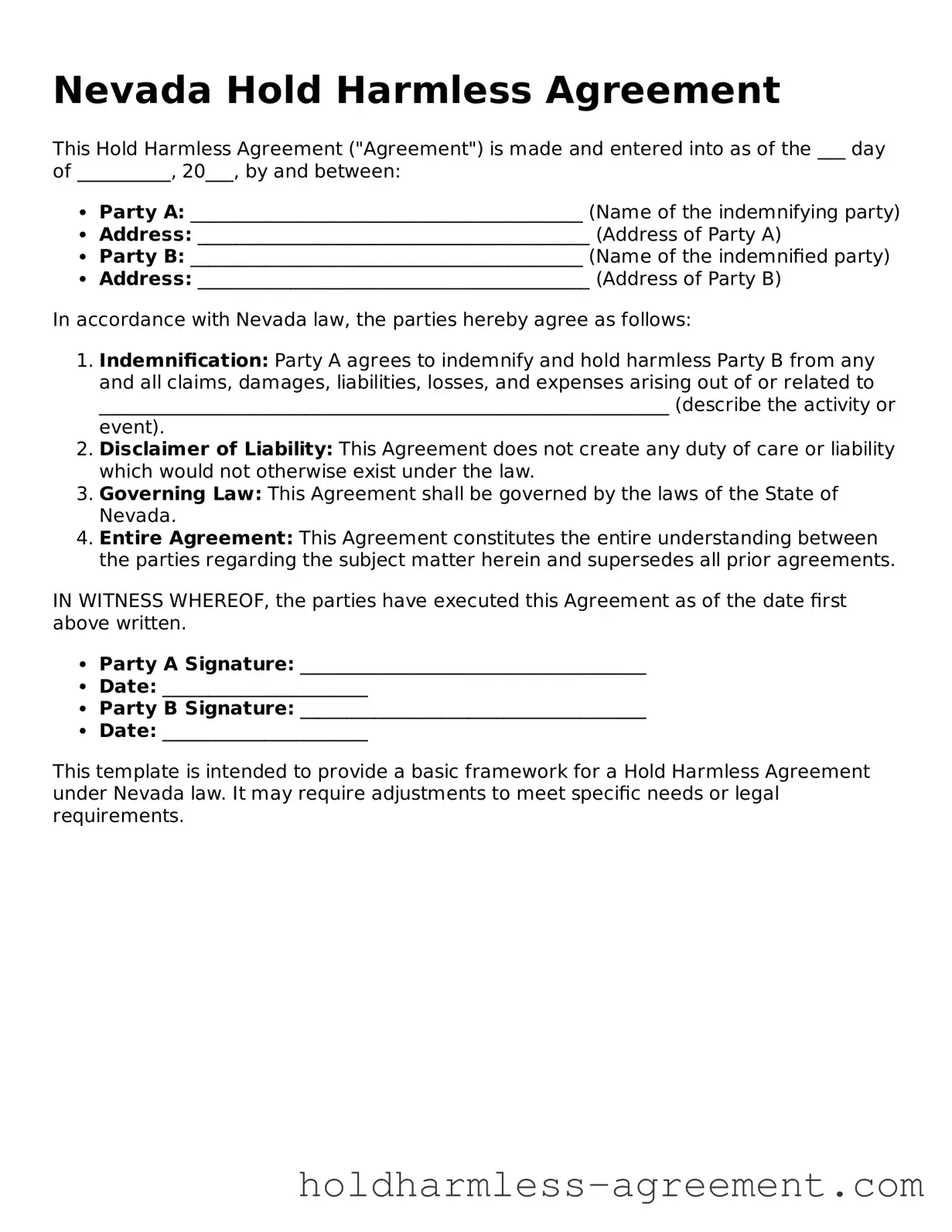What is a Nevada Hold Harmless Agreement?
A Nevada Hold Harmless Agreement is a legal document that protects one party from liability for any injuries or damages that may occur during a specific activity or event. Essentially, it ensures that one party agrees not to hold the other party responsible for certain risks. This agreement is commonly used in various situations, such as rental agreements, construction contracts, and event planning.
Who typically uses a Hold Harmless Agreement in Nevada?
Various individuals and organizations utilize Hold Harmless Agreements in Nevada. Common users include:
-
Property owners renting out their spaces.
-
Contractors and subcontractors in the construction industry.
-
Event organizers planning public or private gatherings.
-
Businesses hosting activities that involve potential risks.
These agreements help to clarify responsibilities and reduce the risk of legal disputes.
What are the key components of a Hold Harmless Agreement?
A comprehensive Hold Harmless Agreement typically includes the following elements:
-
Identification of Parties:
Clearly state the names and roles of the parties involved.
-
Description of Activities:
Outline the specific activities or events covered by the agreement.
-
Liability Waiver:
A statement indicating that one party will not hold the other responsible for certain risks.
-
Duration:
Specify the time frame during which the agreement is effective.
-
Signatures:
Both parties must sign and date the agreement to make it legally binding.
Is a Hold Harmless Agreement legally binding in Nevada?
Yes, a Hold Harmless Agreement can be legally binding in Nevada, provided it meets certain requirements. For the agreement to be enforceable, it must be clear, specific, and voluntarily agreed upon by both parties. However, it’s important to note that certain limitations exist. For example, an agreement cannot waive liability for gross negligence or willful misconduct.
How can one create a Hold Harmless Agreement in Nevada?
Creating a Hold Harmless Agreement in Nevada can be straightforward. Here are the steps to follow:
-
Determine the purpose of the agreement and the parties involved.
-
Draft the agreement, ensuring all key components are included.
-
Review the document for clarity and completeness.
-
Have both parties sign and date the agreement.
-
Consider having the agreement notarized for added legal protection.
Can a Hold Harmless Agreement be revoked or modified?
Yes, a Hold Harmless Agreement can be revoked or modified, but both parties must agree to any changes. It is advisable to document any modifications in writing and have both parties sign the new agreement. This helps to avoid confusion and ensures that all parties are on the same page regarding their responsibilities.
